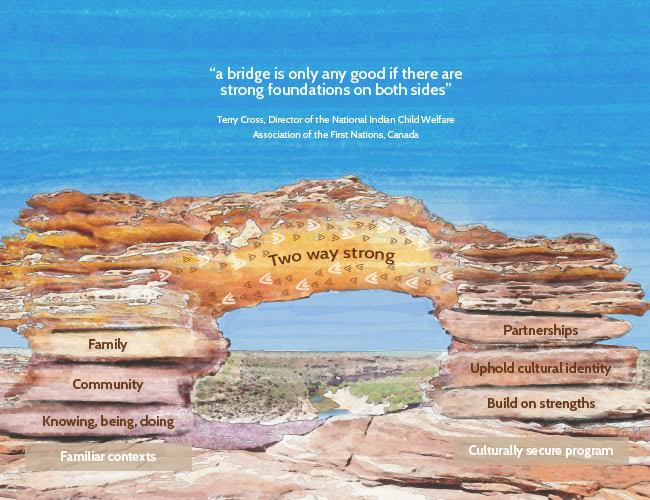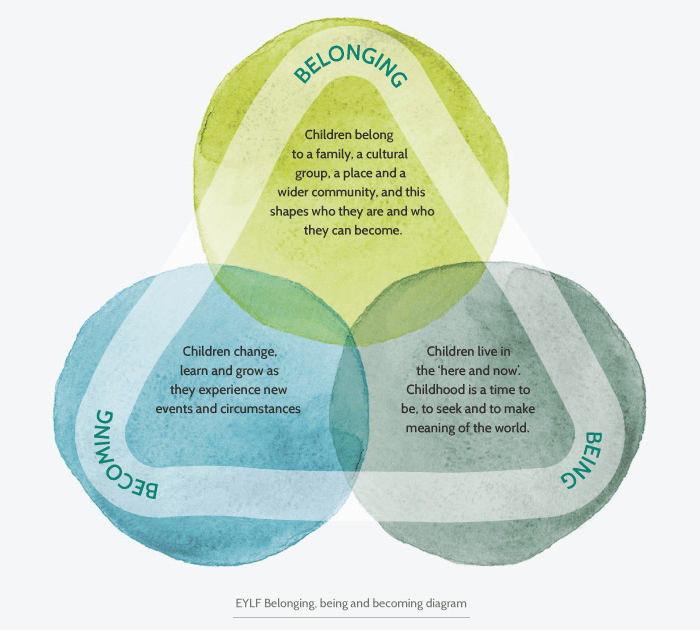A quality early learning program values and builds on the variety of cultures, languages and practices that children bring from their families and communities. It builds bridges between children’s homes and social contexts, and the early learning program and schooling.

'A bridge is only any good if there are strong foundations on both sides' – Terry Cross, Director of the National Indian Child Welfare Association of the First Nations, Canada. An image of a bridge shows familiar contexts on the left pillar including family, community and knowing, being, doing. The bridge has culturally secure programs on the right pillar including partnerships, uphold cultural identity and build on strengths. Joining the two pillars are the words 'two way strong'.
This takes some understanding of the different ways children experience childhood. Using the words of the Early Years Learning Framework, childhood is all about belonging, being and becoming.

The EYLF Belonging, being and becoming diagram shows three intersecting circles:
- Belonging – Children belong to a family, a cultural group, a place and a wider community, and this shapes who they are and who they can become.
- Becoming – Children change, learn and grow as they experience new events and circumstances.
- Being – Children live in the 'here and now'. Childhood is a time to be, seek and to make meaning of the world.
For Aboriginal and Torres Strait Islander children, connections to family, community, culture and place are especially important in shaping their identity.
'…our world is always about being related…it is about being related to people, to the sky, the salt water, the animals, the plants, the land…that is how we hold who we are…it is that we are related to everything else.'
(Martin, K, 2005, ‘Experiences of relatedness, rites and responsibilities: Aboriginal early childhood realities of present and future, and what research hasn’t been able to tell us.’ Paper presented at Our Children the Future Conference, June, Adelaide, 2005 in Priest, K, 2005 p12)
When Aboriginal and Torres Strait Islander children and their families come to an early learning program, they generally experience a western world view of childhood, learning and development. This will come through in all aspects of the program, from how the environment looks and feels to the nature of relationships within it – the languages used and how families are engaged in the program.
Effective educators build learning bridges with the children and their families through a collaborative, 2-way process.
You can do this by:
- nurturing strong and respectful partnerships with families and communities
- reflecting on your values, views and understandings of childhood, children and learning
- drawing on the culturally valued knowledge about children’s learning and development held within the community
- developing your own, as well as children’s, cultural competence
- building your awareness and understanding of Aboriginal and Torres Strait Islander cultures, history and contemporary societies.